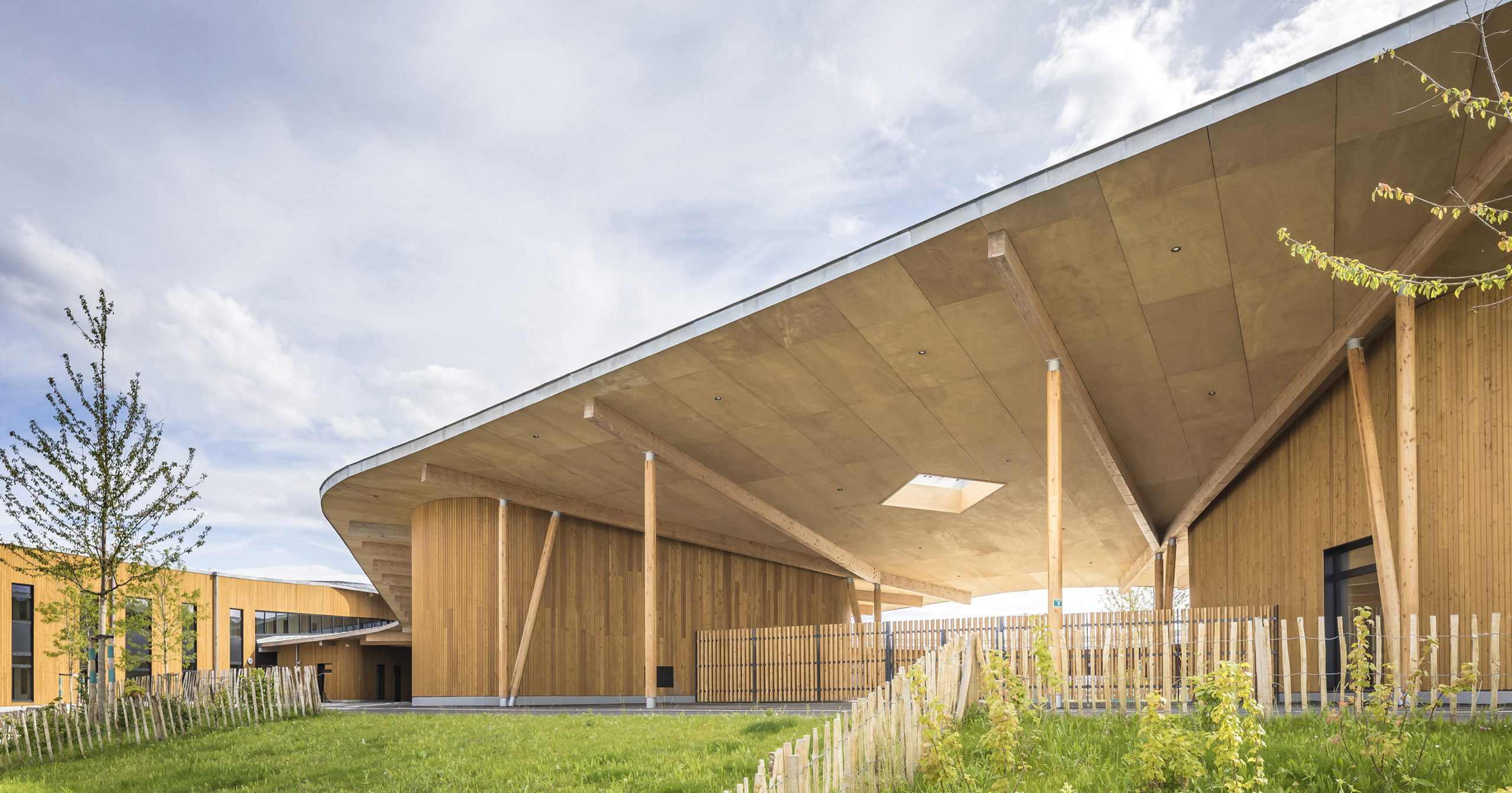1235 Vine Street – is an eight-story mixed-use commercial building set to break ground soon in Hollywood at the intersection of Vine and La Mirada. The 117,150 square foot office building will transform an underutilized site into a vibrant setting with creative offices above 7,960 square feet of restaurant and/or retail space on the ground floor. The building adds prominence and much-needed density to the underused site and area, using carving, blocking, and stepping to help transition the scale shift from the residential bungalows to the west. The arched forms, varied and playful, along with the use of color and texture ― glass, white and pink pigmented concrete, and perforated metal cladding ― are designed to complement the architectural language of adjacent buildings. At once part of the urban fabric while standing out amidst Hollywood’s backdrop, it is a star among stars!
Architizer chatted with Matthew Ollier, Managing Partner at Hawkins\Brown to learn more about this project.
Architizer: What inspired the initial concept for your design?
Matthew Ollier: We were really inspired by the particular nature of the site, interpreting traditional urban design and compositional approaches into contemporary yet deferential addition to Hollywood’s built environment. Referencing forms in adjacent buildings, arched openings are used to create an external colonnade and display the building’s program. The colonnade provides shaded outdoor dining and seating areas to the restaurant and commercial lobby activating the streetscape and improving the pedestrian experience along Vine.

© Hawkins\Brown

© Hawkins\Brown
This project won in the 10th Annual A+Awards! What do you believe are the standout components that made your project win?
We are thrilled to be honored with an A+Award for this project. We put our hearts into this project, leveraging the momentum and demand for campus-type developments in Hollywood that have become desirable destinations for media and technology companies. We also tried to think about the post-pandemic office environment and creating a place where people want to show up, spend time, and be productive. Finally, we were inspired by the indoor-outdoor relationship using staggered roof lines that complement adjacent structures such as Villa Elaine to create a series of outside terraces and decks.

© Hawkins\Brown
What was the greatest design challenge you faced during the project, and how did you navigate it?
The greatest challenge for this project was how to successfully navigate a scale shift from low-rise residential bungalows to the west to taller, more robust civic scale buildings to the east. We used carving, blocking, and stepping to help ease the transition but it was something we thought a lot about as we wanted this building to be both part of the urban fabric but also to stand out with prominence. Changes in material tone help with this by creating a hierarchy to the building’s mass with the primary volumes expressed in the pink-ish tone and the secondary, recessed volumes in white.

© Hawkins\Brown
How did the context of your project — environmental, social or cultural — influence your design?
The surrounding urban context heavily influenced the site response – particularly the activation of the streetscape. We purposely avoided parking at ground level to avoid blank, defensive facades that are unfortunately all too commonplace across the city. Instead, we created a generous lobby with shared amenity facilities as well as restaurants and retail to animate Vine Street and provide opportunities for public engagement. Vibrant streets are the social currency of the urban environment.

© Hawkins\Brown
How important was sustainability as a design criteria as you worked on this project?
To us, sustainable architecture is about more than an environmental issue. It is fundamental to our goal to create places with personality and purpose that are well made, well used and well loved. Our architecture is designed with care for the context. This includes material specification, health and well-being, comfort, inclusivity, waste reduction, longevity, and maintenance. The sustainability measures we take in the designs of our buildings—at both macro and micro scales—increase livability. We designed this project very much with that lens, particularly what that means for the post-pandemic office environment where these measures have never been more important and in demand.

© Hawkins\Brown
How do you believe this project represents you or your firm as a whole?
This is a seminal project for our Los Angeles office as we ramp up our stateside operations. But, at its core, it is very much a Hawkins\Brown project. To all of our work, we bring a heart-felt social agenda and deep technical expertise but wield them with a twinkle in our eye. We think profoundly about the impact buildings can make on people’s lives while simultaneously trying to raise a smile. Playful and profound. Technical and human. Sweet and irresistibly salty.

© Hawkins\Brown
Team Members
The Post Group, Building Owner; Plus Development Group, Building Developer; Hawkins\Brown, Architect – Team Members: Matthew Ollier, Principal-in-Charge, Alex Anamos, AIA LEED AP, Project Architect, Rebecca Fode, Project Manager, Diane Thepkhounphithack, Project Manager, Micaela Danko, Job Captain/Designer
Consultants
Gruen Associates, Architect of Record; C.W. Driver, General Contractor; Englekirk, Structural Engineer; PAE, M/E/P Engineer; Mayer Brown, Land-Use Attorney
For more on 1235 Vine Street, please visit the in-depth project page on Architizer.









 1235 Vine Street
1235 Vine Street 


